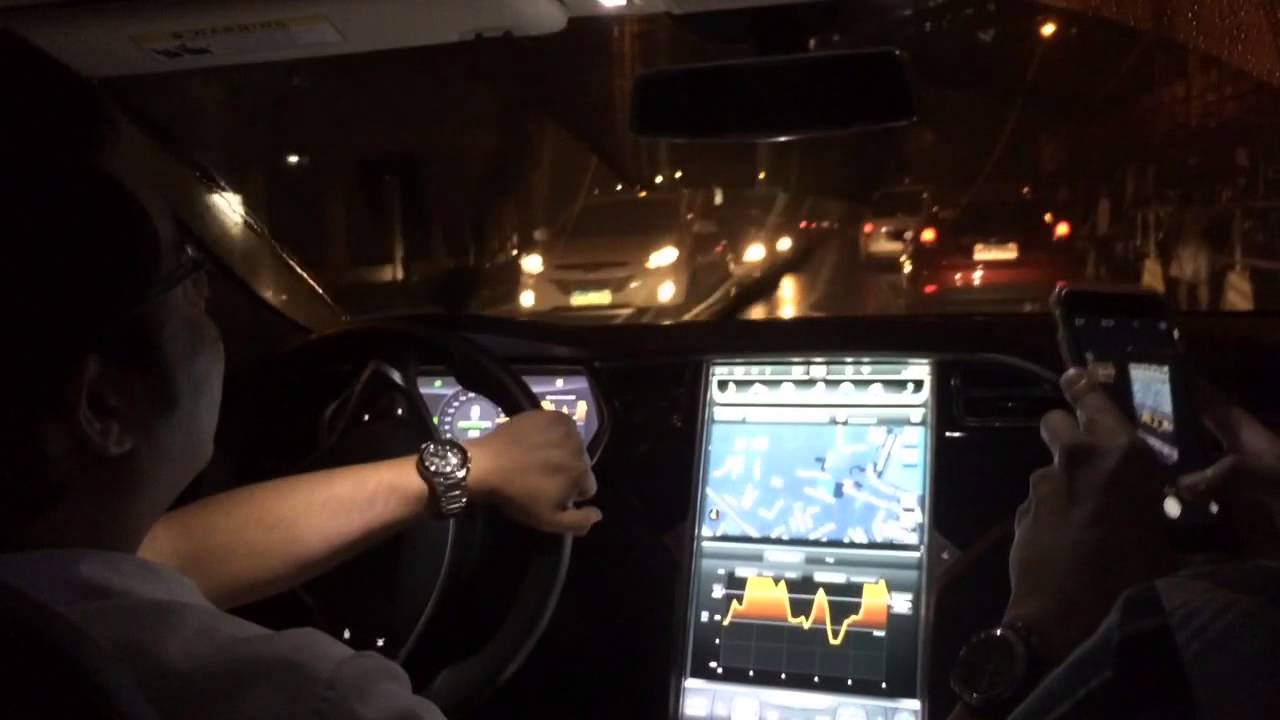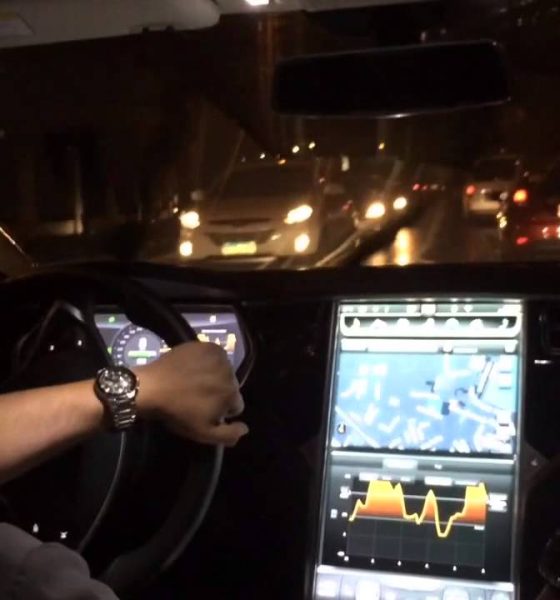A recently-published patent application from Uber has revealed that the ride-sharing company is planning on using artificial intelligence to identify a passenger’s behavioral state, including being drunk, before being picked up. With this technology, Uber is hoping to better tailor its ride-sharing options for its ever-growing user base.
The patent, titled “Predicting user state using machine learning” describes a system that uses machine learning to study the usual behavior of Uber users. These behaviors include several factors, including location, the precision of users’ clicks on the app’s buttons, spelling accuracy when communicating with drivers, average walking speed, and how long it takes passengers to request for a ride. The usual time when users hail an Uber will also be included in the system.
According to Uber’s patent application:
“The user state model is trained to predict user state using past features in conjunction with previously-identified unusual user states. That is, the user state prediction module detects whether the user has input data in a way that is unusual for that particular user and/or in a way differing from normal user behavior that is similar to the differences for other users having unusual behavior.”
Thus, if an intoxicated user hails a ride while walking and typing clumsily, the ride-hailing company’s AI system would be able to make an assumption that the user is less than sober. Once the system detects that a user is likely drunk, it would “alter the parameters” of its service in order to match the passenger with drivers who have relevant experience and training. Based on the passenger’s state, Uber might also restrict a drunk user’s access to its shared ride services.
“the user may not be matched with any provider, or limited to providers with experience or training with users having an unusual state” reveals the patent application.
The patent is authored by members of Uber’s Trust & Safety Team, who are tasked with making the company’s service and products safer. Overall, the system stands to benefit both passengers and drivers, considering that intoxication has proven to be a problem for Uber so far. According to an investigation from CNN, at least 103 Uber drivers have been accused of abusing intoxicated passengers over the past four years. Uber drivers have also reported instances where they got assaulted by passengers who were drunk.
The use of AI systems is steadily gaining ground. In China alone, SenseTime, a company involved in mainstream smartphone applications such as AR filters, has been working with the Chinese government in developing AI solutions that are capable of matching footage from crime scenes to criminal database photos. After a funding round led by Chinese e-commerce giant Alibaba earlier this year, SenseTime’s total valuation rose to over $4.5 billion, making it one of the most valuable AI startups in the industry.
In the United States, AI is starting to get embraced by the US military, with self-driving vehicles and AI-powered weapons being in development. Just recently, Google saw protests from staff over the company’s participation in the Pentagon’s artificial intelligence initiative, Project Maven. According to reports, Google’s AI technology has been used to improve military drones’ image-processing capabilities, which has been helping the military fight threats in several regions such as the Middle East. Google, for its part, stated that its work with the Pentagon has been “mundane,” and that the technology it provided was limited only to non-offensive uses.

News
Tesla FSD fleet is nearing 7 billion total miles, including 2.5 billion city miles
As can be seen on Tesla’s official FSD webpage, vehicles equipped with the system have now navigated over 6.99 billion miles.

Tesla’s Full Self-Driving (Supervised) fleet is closing in on almost 7 billion total miles driven, as per data posted by the company on its official FSD webpage.
These figures hint at the massive scale of data fueling Tesla’s rapid FSD improvements, which have been quite notable as of late.
FSD mileage milestones
As can be seen on Tesla’s official FSD webpage, vehicles equipped with the system have now navigated over 6.99 billion miles. Tesla owner and avid FSD tester Whole Mars Catalog also shared a screenshot indicating that from the nearly 7 billion miles traveled by the FSD fleet, more than 2.5 billion miles were driven inside cities.
City miles are particularly valuable for complex urban scenarios like unprotected turns, pedestrian interactions, and traffic lights. This is also the difference-maker for FSD, as only complex solutions, such as Waymo’s self-driving taxis, operate similarly on inner-city streets. And even then, incidents such as the San Francisco blackouts have proven challenging for sensor-rich vehicles like Waymos.
Tesla’s data edge
Tesla has a number of advantages in the autonomous vehicle sector, one of which is the size of its fleet and the number of vehicles training FSD on real-world roads. Tesla’s nearly 7 billion FSD miles then allow the company to roll out updates that make its vehicles behave like they are being driven by experienced drivers, even if they are operating on their own.
So notable are Tesla’s improvements to FSD that NVIDIA Director of Robotics Jim Fan, after experiencing FSD v14, noted that the system is the first AI that passes what he described as a “Physical Turing Test.”
“Despite knowing exactly how robot learning works, I still find it magical watching the steering wheel turn by itself. First it feels surreal, next it becomes routine. Then, like the smartphone, taking it away actively hurts. This is how humanity gets rewired and glued to god-like technologies,” Fan wrote in a post on X.
News
Tesla starts showing how FSD will change lives in Europe
Local officials tested the system on narrow country roads and were impressed by FSD’s smooth, human-like driving, with some calling the service a game-changer for everyday life in areas that are far from urban centers.

Tesla has launched Europe’s first public shuttle service using Full Self-Driving (Supervised) in the rural Eifelkreis Bitburg-Prüm region of Germany, demonstrating how the technology can restore independence and mobility for people who struggle with limited transport options.
Local officials tested the system on narrow country roads and were impressed by FSD’s smooth, human-like driving, with some calling the service a game-changer for everyday life in areas that are far from urban centers.
Officials see real impact on rural residents
Arzfeld Mayor Johannes Kuhl and District Administrator Andreas Kruppert personally tested the Tesla shuttle service. This allowed them to see just how well FSD navigated winding lanes and rural roads confidently. Kruppert said, “Autonomous driving sounds like science fiction to many, but we simply see here that it works totally well in rural regions too.” Kuhl, for his part, also noted that FSD “feels like a very experienced driver.”
The pilot complements the area’s “Citizen Bus” program, which provides on-demand rides for elderly residents who can no longer drive themselves. Tesla Europe shared a video of a demonstration of the service, highlighting how FSD gives people their freedom back, even in places where public transport is not as prevalent.
What the Ministry for Economic Affairs and Transport says
Rhineland-Palatinate’s Minister Daniela Schmitt supported the project, praising the collaboration that made this “first of its kind in Europe” possible. As per the ministry, the rural rollout for the service shows FSD’s potential beyond major cities, and it delivers tangible benefits like grocery runs, doctor visits, and social connections for isolated residents.
“Reliable and flexible mobility is especially vital in rural areas. With the launch of a shuttle service using self-driving vehicles (FSD supervised) by Tesla in the Eifelkreis Bitburg-Prüm, an innovative pilot project is now getting underway that complements local community bus services. It is the first project of its kind in Europe.
“The result is a real gain for rural mobility: greater accessibility, more flexibility and tangible benefits for everyday life. A strong signal for innovation, cooperation and future-oriented mobility beyond urban centers,” the ministry wrote in a LinkedIn post.
News
Tesla China quietly posts Robotaxi-related job listing
Tesla China is currently seeking a Low Voltage Electrical Engineer to work on circuit board design for the company’s autonomous vehicles.

Tesla has posted a new job listing in Shanghai explicitly tied to its Robotaxi program, fueling speculation that the company is preparing to launch its dedicated autonomous ride-hailing service in China.
As noted in the listing, Tesla China is currently seeking a Low Voltage Electrical Engineer to work on circuit board design for the company’s autonomous vehicles.
Robotaxi-specific role
The listing, which was shared on social media platform X by industry watcher @tslaming, suggested that Tesla China is looking to fill the role urgently. The job listing itself specifically mentions that the person hired for the role will be working on the Low Voltage Hardware team, which would design the circuit boards that would serve as the nervous system of the Robotaxi.
Key tasks for the role, as indicated in the job listing, include collaboration with PCB layout, firmware, mechanical, program management, and validation teams, among other responsibilities. The role is based in Shanghai.
China Robotaxi launch
China represents a massive potential market for robotaxis, with its dense urban centers and supportive policies in select cities. Tesla has limited permission to roll out FSD in the country, though despite this, its vehicles have been hailed as among the best in the market when it comes to autonomous features. So far, at least, it appears that China supports Tesla’s FSD and Robotaxi rollout.
This was hinted at in November, when Tesla brought the Cybercab to the 8th China International Import Expo (CIIE) in Shanghai, marking the first time that the autonomous two-seater was brought to the Asia-Pacific region. The vehicle, despite not having a release date in China, received a significant amount of interest among the event’s attendees.










